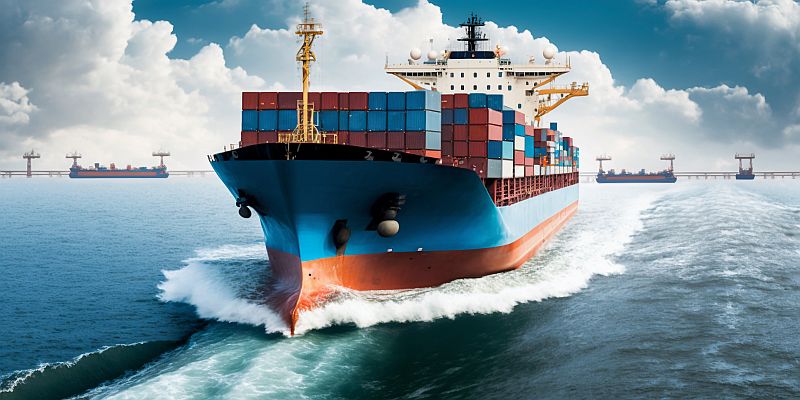For centuries, cargo transport by sea has been the backbone of international trade. Today, over 80% of global merchandise trade by volume is carried on the world’s oceans by container ships, tankers and dry bulk carriers. Sea freight underpins import and export activities connecting businesses worldwide. Delivering efficiency in complex sea logistics is pivotal to supply chain success.
The Scale of Sea Logistics
Seaborne trade continues to expand, reaching over 10 billion metric tons loaded in 2017. Containerisation revolutionised sea freight over the last 50 years, with ports worldwide now handling over 700 million 20-foot equivalent units (TEUs) annually. Larger container vessels are being built, with mega-ships exceeding 20,000 TEUs emerging. Complex collaboration between shipping lines, freight forwarders, port authorities, import/export brokers and regulators keeps sea logistics flowing. Achieving speed, reliability and security across maritime supply chains is central to international trade.
Sea Freight Services
Diverse sea freight services have developed offering importers and exporters flexible options:
- FCL (full container load) transports goods filling a sole-use container.
- LCL (less than container load) consolidates consignments from various shippers into shared containers.
- Refrigerated or ‘reefer’ containers maintain desired temperatures for perishables.
- Flat rack containers enable oversize items.
- Tank containers ship liquids safely in iso tanks.
- Ro-ro vessels carry roll-on, roll-off wheeled cargo.
- Bilateral sea freight agreements between specific countries.
- Customs bonded warehousing streamlines cross-border trade.
Meeting diverse cargo requirements safely and timely demonstrates why sea freight remains critical.
Organising Sea Freight Logistics
Coordinating a sea freight shipment involves meticulous planning:
- Selecting the best carrier considering networks, schedules and capabilities.
- Choosing an appropriate route balances costs, timings and risks.
- Preparing export customs documentation thoroughly.
- Packing goods appropriately into containers and generating accurate manifests.
- Scheduling timely inland haulage to/from ports.
- Consolidating LCL shipments for cost and admin efficiencies.
- Tracking containers and progress via shipping line’s online portals.
- Arranging necessary insurance coverage.
- Liaising with overseas freight forwarders for smooth handovers.
Well-managed logistics ensure cargo arrives intact, on time and duty/tax compliant.
Benefits of Sea Freight
Sea freight offers major advantages for international trade:
- Low cost compared to air transportation.
- Ability to handle large volumes and heavy cargo.
- Security of goods in sealed containers.
- Frequency of services on major trade lanes.
- Flexibility to transport finished goods or raw materials.
- Better environmental sustainability than other transport modes.
- Smooth handovers between sea, road and rail logistics.
- More routing options than air or rail.
For the foreseeable future, the sea will remain the conduit for bulk commodities and containerised products across continents.
Managing Risks
However, risks also exist with sea freight logistics:
- Maritime piracy in some regions.
- Exposure to harsh sea conditions causes cargo damage.
- Lack of real-time tracking visibility compared to air.
- Delays from port congestion or industrial action.
- Strict customs clearance procedures in certain countries.
- Longer lead times and less control than air freight.
- Complex international conventions and regulations.
- Size limits on certain maritime routes.
Close liaison between freight forwarders aids risk mitigation and prompt problem resolution for clients.
Future Directions
Technology is unlocking greater efficiency in sea logistics:
- Big data analytics to model vessel stowage plans.
- Blockchain enables trusted shipment documentation.
- The Internet of Things provides real-time container monitoring.
- Port automation and smart containers.
- Renewable fuels and electrification to decarbonise vessels.
- Autonomous ‘seabots’ improving inspections.
- Machine learning for predictive supply chain insights.
- Digital marketplaces and booking platforms.
With continued innovation, sea freight can enhance resilience, safety and sustainability across evermore interconnected global supply chains.
Conclusion
Sea freight retains a crucial role in connecting businesses internationally through established liner networks and services. Yet orchestrating sea logistics requires mastering complexities of documentation, border compliance and risk management. Forward-thinking sea freight operators enable smooth cargo delivery by leveraging technology’s capabilities. Though out of sight, sea transport remains the lifeblood underpinning today’s globalised economy.
Article Submitted By Community Writer



